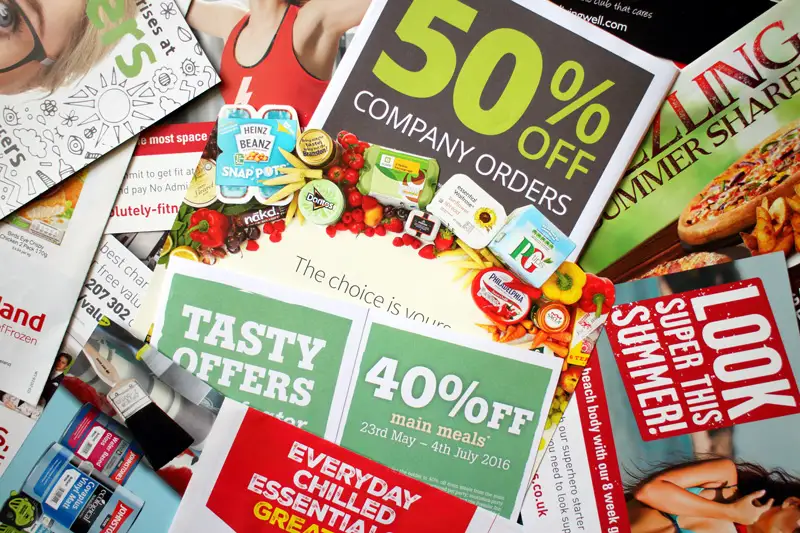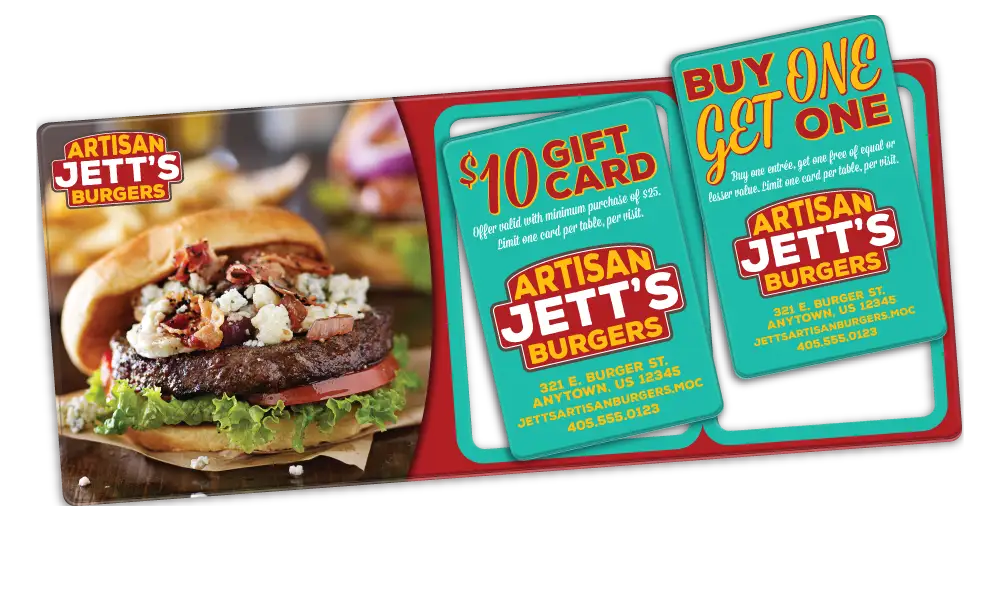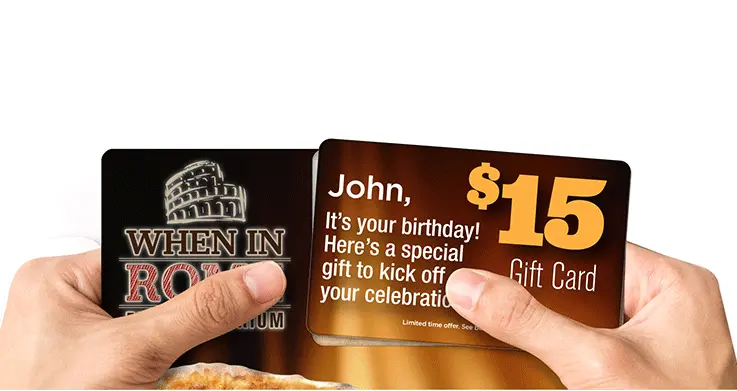Crafting the Perfect Direct Mail Campaign
How to Build a Perfect Direct Mail Campaign for Restaurants
In the competitive world of the restaurant industry, where every meal can feel like a battle for attention, direct mail for restaurants can be your secret weapon. But this isn’t about flooding mailboxes with generic “junk mail.” Here’s your guide to crafting direct mail campaigns that not only capture attention but significantly enhance ROI and redemption rates, turning direct mail marketing into an effective marketing tool.
Understanding the Power of Direct Mail

The tactile nature of direct mail for restaurants allows for a personal connection that digital marketing often can’t replicate. People are more likely to respond to something they can hold, touch, and keep, especially if it promises an experience or reward. This is where the magic of direct mail lies – in its ability to stand out in an era of digital saturation. Additionally, the physical nature of direct mail can evoke a sense of anticipation and excitement, making it an excellent medium for creating memorable first or repeated impressions.
Designing Your High ROI Mail Piece

- Material Quality: Choose high-quality materials that feel valuable. A self-mailer resembling a gift card can convey exclusivity and value, unlike a scuffed and creased run of the mill paper postcard. Think about using materials that suggest luxury or special occasions, enhancing the perceived value of dining at your establishment.
- Visual Appeal: Use compelling photography and a custom design that reflects your brand’s identity. High-resolution images of your signature dishes, paired with a clean, attractive layout, can entice recipients like an invitation to a culinary event. Think of your mail piece as a visual appetizer, setting the tone for what they can expect at your restaurant. Incorporate your restaurant’s ambiance or theme into the design to give a taste of what awaits.
- Presence: A postcard designed to mimic the look and feel of a substantial gift card can significantly enhance perceived value, compelling recipients to engage with your offer immediately. This strategy leverages the psychological appeal of receiving something of apparent worth, making recipients feel they’re getting something extra just for opening their mail.
- Convenience: Make it easy for the customer to keep your offers. Wallet-friendly pop-out coupons fit the bill perfectly – they can be redeemed at the spur of a moment or even given to friends or coworkers at a moment’s notice.
Targeting the Right Audience

- Segmentation: If your restaurant serves gourmet burgers, you’re not going to win over the vegan hipsters. In this case, pitch middle-class families with multiple kids to increase the ticket-size of each redemption. Mailing to every door may seem like a good idea, but your investment is better spent targeting key demographics and those that resemble your best customers.
- Personalization: Use any available data to tailor your offers, enhancing relevance and connection with your customer base. This could mean customizing offers based on previous visits or cuisine preferences. Personalization makes each recipient feel like the offer was made just for them, increasing the likelihood of redemption.
- Behavioral Insights: Analyze customer behaviors to refine your targeting further. A loyalty list tells you who buys, when they buy, how much they buy, and how often they return to buy. It is a powerful tool that can be used in a variety of ways in the battle for customers and their spending habits.
Crafting Compelling Direct Mail Offers
Your offers need to be irresistible in your direct mail campaigns:
- Standout Deals: Make offers like “Buy One, Get One Free” feel special, not routine. Exclusive event invitations or a chef’s table experience can make recipients feel like VIPs, re-engaging existing customers and enticing new customers. Highlight what makes your offer unique, perhaps by linking it to a unique dining experience or a seasonal menu.
- Customization: Different offers for new customers versus existing customers, or based on their dining history, can increase engagement. Think of loyalty rewards or personalized discounts based on past behavior or preferences. Offering something tailored to their tastes or dining patterns can significantly boost redemption rates.
- Urgency: Time-sensitive promotions can motivate immediate action. Limited time offers or countdowns to an event can spur quicker responses by creating a sense of scarcity or urgency. Highlight how long the offer is available!
Timing and Frequency: Engaging at the Right Moment
Timing your restaurant direct mail campaign is an art:
- Strategic Timing: Send mailers during peak dining times such as holidays or local events. “We miss you” offers can rekindle interest from downward-trending loyalty members (those who haven’t visited in a long while). Timing can be tied to seasonal changes, local events, or even weather patterns that might affect dining habits. Consider mailing before major holidays when people plan larger gatherings or celebrations.
- Frequency: Find the right balance to stay on the radar without becoming a nuisance. Align mailers with menu updates, seasonal promotions, or even around local happenings that might increase community activity for local businesses. Too much can lead to fatigue, too little and you might be forgotten. A good rule of thumb might be quarterly mailings, with additional targeted sends for special events or promotions.
- Seasonality: Consider seasonal trends. A winter-specific menu or a summer barbecue special can align perfectly with what’s on people’s minds at those times, offering them exactly what they crave and potentially bringing in more customers. Seasonal mailers can also tap into local festivities or sports seasons, offering themed dining experiences.
Cost Management and Budgeting
What is the average cost of a direct mail campaign?
- Cost Factors: Expect costs from $0.30 to $3.00 per piece, influenced by design complexity, print quality, list acquisition, and postage. The investment in quality materials can pay off with higher redemption rates, but consider the balance between quality and quantity to maximize reach.
- ROI Potential: It isn’t unusual for a well-crafted restaurant direct mail campaign to achieve redemption rates between 10-20% for similar costs as standard postcards. This ROI can often justify the expense when executed correctly, leading to an increase in revenue. Remember, the goal is not just to attract customers but to convert them into repeat visitors, enhancing long-term revenue.
- Balancing Cost with Impact: Higher initial costs for quality materials will lead to more impactful collateral and a higher ROI. But there’s a point where the Law of Diminishing Returns rears its ugly head; thus, finding the optimal investment level is key. Balancing quality with cost-effectiveness ensures your campaign isn’t just beautiful but also profitable. Consider testing different levels of investment to see what yields the best return.
Measuring Direct Mail Success and Iterating
To refine your restaurant direct mail campaigns:
- Tracking: Use unique promo codes or QR codes to track conversions, spending, and return visits from both new customers and existing customers. This helps in understanding the actual financial impact of your campaign, allowing for more precise future targeting. Tracking can also help identify which demographics or types of offers perform best.
- Feedback: Implement feedback mechanisms to gather customer insights about what worked or what could be improved. This might involve post-visit surveys or feedback cards left on tables, providing qualitative data to complement your quantitative metrics. Understanding customer reactions can guide future offer creation and targeting.
- Data Analysis: Use this data to adjust future direct mail campaigns, understanding what resonates with your customer base. Look for patterns in demographics, offer types, or timing that lead to higher engagement. Regular analysis ensures your strategy evolves with your audience’s preferences, keeping your marketing efforts fresh and relevant.
Conclusion
Building the perfect restaurant direct mail campaign involves creating a targeted, engaging, and memorable marketing experience. By focusing on design quality, precise audience targeting, compelling offers, strategic timing, and thorough measurement, you can elevate your restaurant direct mail from mere junk to a cherished invitation. This approach can transform your restaurant into a destination where customers are eager to return, not just for a meal but for the unique experience your brand offers.
In a digital world, your direct mail for restaurants can be the tactile touch that truly resonates with your community, fostering loyalty and driving business growth. Whether through beautifully designed direct mail menus or targeted postcards, the potential to increase revenue and expand your customer base with direct mail is immense for local businesses. Get a quote today and see how you can scale a thriving direct mail campaign.

